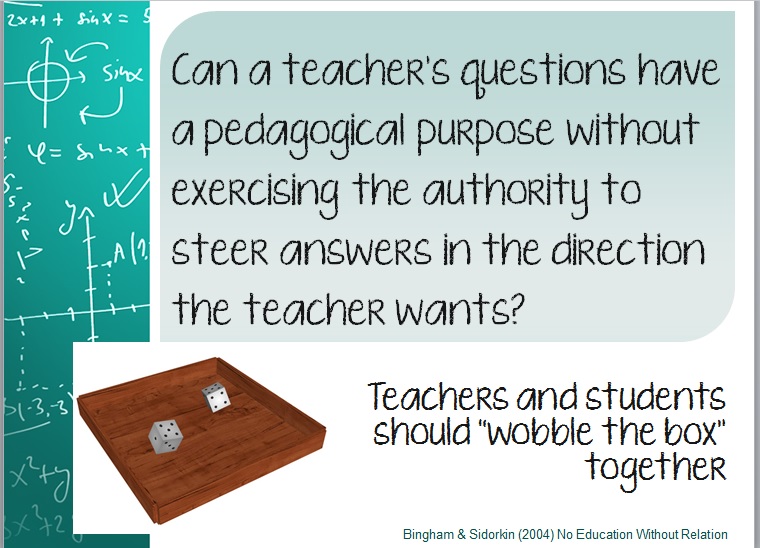It doesn’t always work this way, but it would be awesome if it did. When PBL is perfect or ideal, the students are the ones who make the natural connections or at least see the need or motivation for the problems that we are doing. Yeah, some of them are just really interesting problems and the get pulled in by their own curiosity, but as all math teachers know, we have a responsibility to make sure that students learn a certain amount of topics, it is quite that simple. If students from my geometry class are going into an algebra II class with trigonometry the next year where their teacher will expect them to know certain topics, I better do my job and make sure they have learned it.
So how do I, as a PBL teacher, foster the values for the problem-based learning that I have while at the same being true to the curriculum that I know I have a responsibility to? This is probably one of the biggest dilemmas I face on a daily basis. Where’s the balance between the time that I can spend allowing the students to struggle, explore, enjoy, move through difficulty, etc. – all that stuff that I know is good for them – while at the same being sure that that darn “coverage” is also happening?
So here’s a little story – I have a colleague sitting in on my classes just to see how I teach – because he is interested in creating an atmosphere like I have in my classes in his. We have just introduced and worked on problems relating to the tangent function in right triangle trigonometry in the past week and now it was time to introduce inverse tangent. I do this with a problem from our curriculum that hopefully allows students to realize that the tangent function only is useful when you know the angle.
So as students realize they can’t get the angle from their calculator nor can they get it exactly from the measurement on their protractor (students had values ranging from 35 to 38 degrees when we compared), one of the students in my class says, “Ms. Schettino, wouldn’t it be great if there was a way to undo the tangent?” and the other kids are kind of interested in what she said. She continues, “Yeah, like if the calculator could just give us the angle if we put in the slope. That’s what we want.” I stood there in amazement because that was exactly what I wanted someone to crave or see the need for. It was one of those “holy crap, this is working” moments where you can see that the kids are taking over the learning. I turned to the kids and just said, “yeah, that would be awesome, wouldn’t it? Why don’t you keep working on the next problem?” and that had them try to figure out what the inverse tangent button did on their calculator. They ended up pressing this magical button and taking inverse tangent of 0.75 (without telling them why they were using 0.75 from the previous problem) to see if they could recognize the connection between what they had just done and what they were doing.
At the end of the class, the colleague who was observing came up to me and said, “How did you do that?” and I said, “What do you mean?” and he said, “How did you get the kids to want to learn about inverse tangent? I mean they just fell right into the thing you wanted them to learn about. That was crazy.” I really had to think about that. I didn’t feel like I did anything honestly, the kids did it all. I mean what made them all of a sudden care about getting the angle? Why were they invested? It doesn’t always happen in my classroom that’s for sure. This is not a perfect science – there’s no recipe for it to work – take a great curriculum, interested kids, an open, respectful learning environment and mix well?
I do think however that a huge part of it is the culture that has been created throughout the year and the investment that they have made in their ownership and authorship in their own learning. We have valued their ideas so much that they have come to realize that it is their ideas and not mine that can end up driving the learning – and yes, I do end up feeling a little guilty because I do have a plan. I do have something that I want them to learn, but somehow have created enough interest, excitement and curiosity that they feel like they did it. It is pretty crazy.
